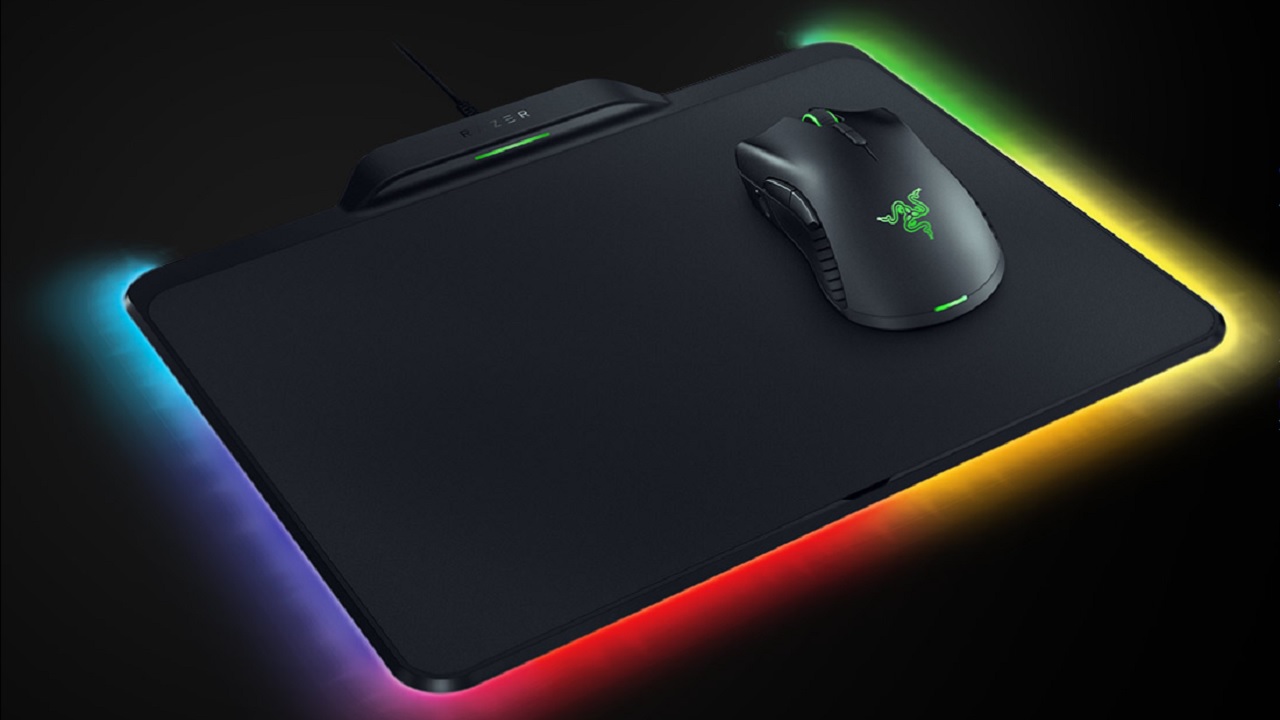GamesRadar+ Verdict
An excellent, light wireless gaming mouse backed up by some interesting tech at an extremely premium price
Pros
- +
Lightweight, precise, and responsive
- +
Comfortable and easy to use
- +
Impressive charging mat tech
Cons
- -
Very pricey
- -
Occasionally loses charge at the edges of the mat
- -
Mouse is tethered in wireless mode to the (fairly large) mat
Why you can trust GamesRadar+
The tech powering gaming peripherals continues to reach ever higher peaks, and the Razer Hyperflux Mamba (the mouse component of the Hyperflux package) and Firefly (the charging pad) are out on the cutting edge. Only the third wireless mouse charging pad solution that's made its way into the wild (behind Corsair's Qi powered MM1000 and the Logitech Powerplay system), the Hyperflux further innovates on the concept by removing the battery. In its place it packs a lighter, smaller capacitor that brings the total weight of the mouse under the 100 gram magic weight number, but also means you only get 5-10 seconds of charge while off the Firefly pad.
CPI: 16,000
IPS: 450
Buttons: 9 programmable
Weight: 96g
Polling rate: 1,000Hz
To see where the Razer Hyperflux ranks amongst its peers, check out our best gaming mouse round-up.
- Get the Razer Hyperflux now at Walmart
Razer Hyperflux - Design
The Hyperflux package benefits a lot from leaning on one of Razer's flagship gaming mice, the Mamba Wireless, which we awarded a near perfect four and a half stars in our review. The Hyperflux version of the Mamba is even better, as the weight has been reduced by replacing the internal battery with a smaller capacitor. It's otherwise very similar to the standard Mamba Wireless - well constructed with a nice black matte plastic chassis, grippy rubberized side panels, and well positioned buttons (particularly the two thumb buttons on the left side panel). It fits nicely into the hand whether you prefer a palm or claw grip, and the slick plastic feet let it glide effortlessly across the Firefly pad.
The pad is also a tidy piece of kit with a reversible surface that lets you choose between firm plastic and cloth, and the underside is a nice non-slip rubber that won't slide all over your desk. Both surfaces are well suited to allowing the mouse to slip along without significant friction but with a sense of control, and feel nice when resting your wrist/palm on them, particularly the cloth. While I'm on record as being generally unimpressed by the obsession among gaming peripherals with RGB lighting, the strip of it around the base of the Firefly pad is pleasantly subtle and understated. The only real issue with the pad is its size. It's quite large, and while it suits a desk well its less ideal for other use cases, like pairing with a laptop on the go or using on the arm of a recliner. This is an issue because the absence of a battery means the mouse is unusable in wireless mode without the Firefly mat; fortunately, you can ditch the mat in those instances and wire the Mamba up via USB.
Razer Hyperflux - Features
While the charging pad is undeniably the headlining feature of the Hyperflux system (and a cool piece of technology), the real features gamers will appreciate are all packed into the mouse. Pretty much all of our glowing praise for the Mamba Wireless apply to the Hyperflux version. The 16,000 CPI and 450 IPS mean that it can be configured to be as razor precise as you need and that it'll maintain tracking even when you're furiously sliding it across the mat, and it benefits from Razer's excellent Synapse software. Synapse has been constantly refined and updated since Razer launched it, and everything in it is easy to find and intuitive to configure/calibrate. Swapping button inputs to your taste or altering the lighting scheme for the mouse or mat is a cinch, and it's all clearly and intelligently laid out.
Of course, the entire point of swapping a capacitor in for the battery is to reduce weight, and the result is the lightest wireless gaming mouse available. The ten grams you save compared to the non-Hyperflux model may sound negligible but makes a noticeable difference, particularly in battle royales or any game where you're whipping your character around to quickly look behind you.
Razer Hyperflux - Performance
Of course, that light weight comes at a price. Not only can you not use the Mamba Hyperflux away from the charging mat, but I've had a couple of instances while using it where it's lost power at the extreme edge of the mat. This only happened to me twice in nearly a week of testing, but it is annoying when it happens and could be fatal in the middle of a Fortnite firefight. It only seems to happen when the edge of the mouse is jutting over the lip of the mat, though, so if you're mainly using the mouse around the middle of the Firefly you may never encounter this issue. Even using it like I do, mostly near the lower left corner of the mat, this problem is exceedingly rare.
Otherwise, the Mamba Hyperflux performs extremely well. It's as slick, accurate, and lag free as its standard wireless counterpart, and the charging system is mostly very reliable. It may feel at first like performing without a net not having a battery charge to fall back on, but it's been extremely steady and reliable, with even the two disconnects lasting mere seconds.
I did encounter a strange issue when first connecting the pad. Razer recommends that you don't place the charging mat on a metal surface, which I carefully avoided doing, and keeping it well clear of other wireless devices that might interfere with it. But even totally isolated on my wooden desktop, I couldn't get the mouse to work wirelessly with the pad. Only after a lengthy troubleshooting process did I discover the issue: a metal filing cabinet several inches below my desk (and separated by the pad by a good three inches of solid wood) was apparently preventing the mouse from 'pairing' with the Firefly. This is obviously an edge case, but be aware that the Firefly likely won't function on a metal desk, and may not function even on a wooden desk if it's got metal drawers or any significant metal components.
Overall - should you buy it?
The Hyperflux package is a very impressive, very nice looking piece of technology. It's the kind of set piece you can wow your friends or coworkers with when it's splayed in all its sleekly designed glory across your desk. As a purely functional value proposition, though, its difficult to recommend; the only real design improvement over the base Mamba Wireless is the slight reduction in weight, which is nice but hardly worth the massive price differential (the Mamba Wireless retails for $99.99, while the Hyperflux comes in at a hefty $249.99). Unless you've got a lot of money to spare, or find the Hyperflux heavily discounted, I'd recommend sticking to the base Mamba Wireless for now; but if you do have the extra budget, or are obsessed with the latest in gadget tech, the Hyperflux is a nice piece of gear.
Some online stores give us a small cut if you buy something through one of our links. Read our affiliate policy for more info.
Alan Bradley was once a Hardware Writer for GamesRadar and PC Gamer, specialising in PC hardware. But, Alan is now a freelance journalist. He has bylines at Rolling Stone, Gamasutra, Variety, and more.




